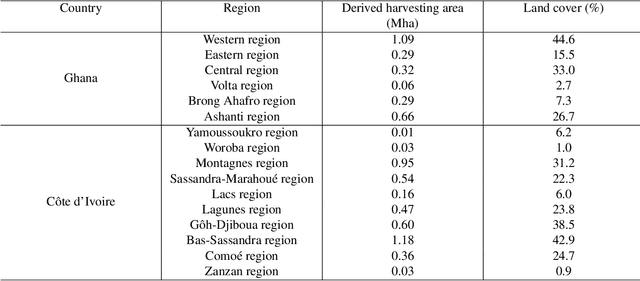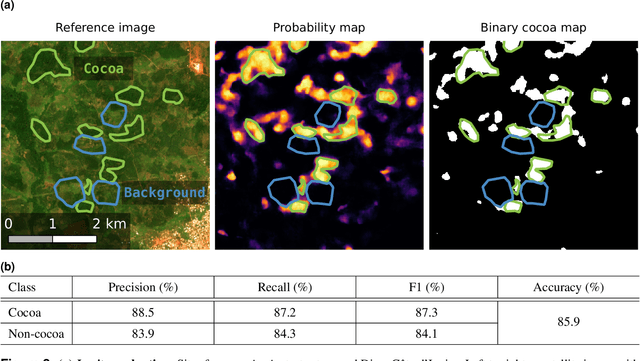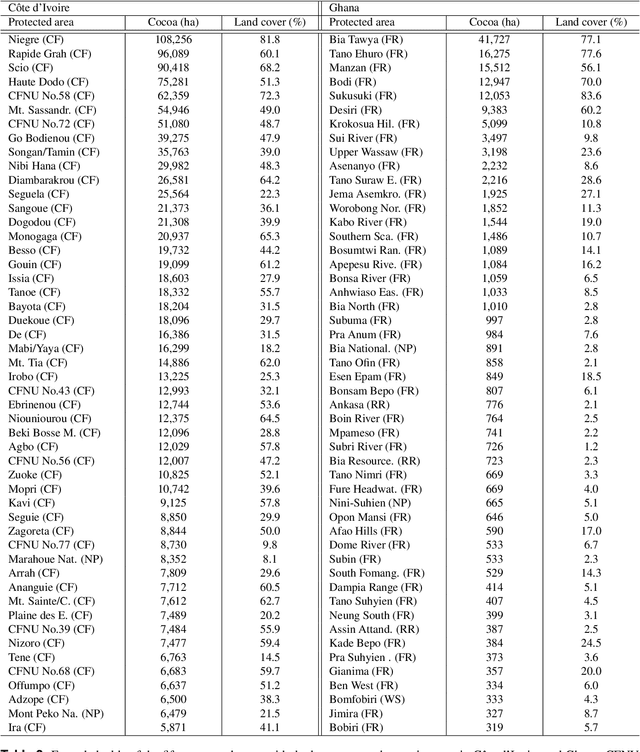Wilma J. Blaser-Hart
The unrealized potential of agroforestry for an emissions-intensive agricultural commodity
Oct 28, 2024


Abstract:Reconciling agricultural production with climate-change mitigation and adaptation is one of the most formidable problems in sustainability. One proposed strategy for addressing this problem is the judicious retention of trees in agricultural systems. However, the magnitude of the current and future-potential benefit that trees contribute remains uncertain, particularly in the agricultural sector where trees can also limit production. Here we help to resolve these issues across a West African region responsible for producing $\approx$60% of the world's cocoa, a crop that contributes one of the highest per unit carbon footprints of all foods. We use machine learning to generate spatially-explicit estimates of shade-tree cover and carbon stocks across the region. We find that existing shade-tree cover is low, and not spatially aligned with climate threat. But we also find enormous unrealized potential for the sector to counterbalance a large proportion of their high carbon footprint annually, without threatening production. Our methods can be applied to other globally significant commodities that can be grown in agroforests, and align with accounting requirements of carbon markets, and emerging legislative requirements for sustainability reporting.
Satellite-based high-resolution maps of cocoa planted area for Côte d'Ivoire and Ghana
Jun 13, 2022



Abstract:C\^ote d'Ivoire and Ghana, the world's largest producers of cocoa, account for two thirds of the global cocoa production. In both countries, cocoa is the primary perennial crop, providing income to almost two million farmers. Yet precise maps of cocoa planted area are missing, hindering accurate quantification of expansion in protected areas, production and yields, and limiting information available for improved sustainability governance. Here, we combine cocoa plantation data with publicly available satellite imagery in a deep learning framework and create high-resolution maps of cocoa plantations for both countries, validated in situ. Our results suggest that cocoa cultivation is an underlying driver of over 37% and 13% of forest loss in protected areas in C\^ote d'Ivoire and Ghana, respectively, and that official reports substantially underestimate the planted area, up to 40% in Ghana. These maps serve as a crucial building block to advance understanding of conservation and economic development in cocoa producing regions.
 Add to Chrome
Add to Chrome Add to Firefox
Add to Firefox Add to Edge
Add to Edge